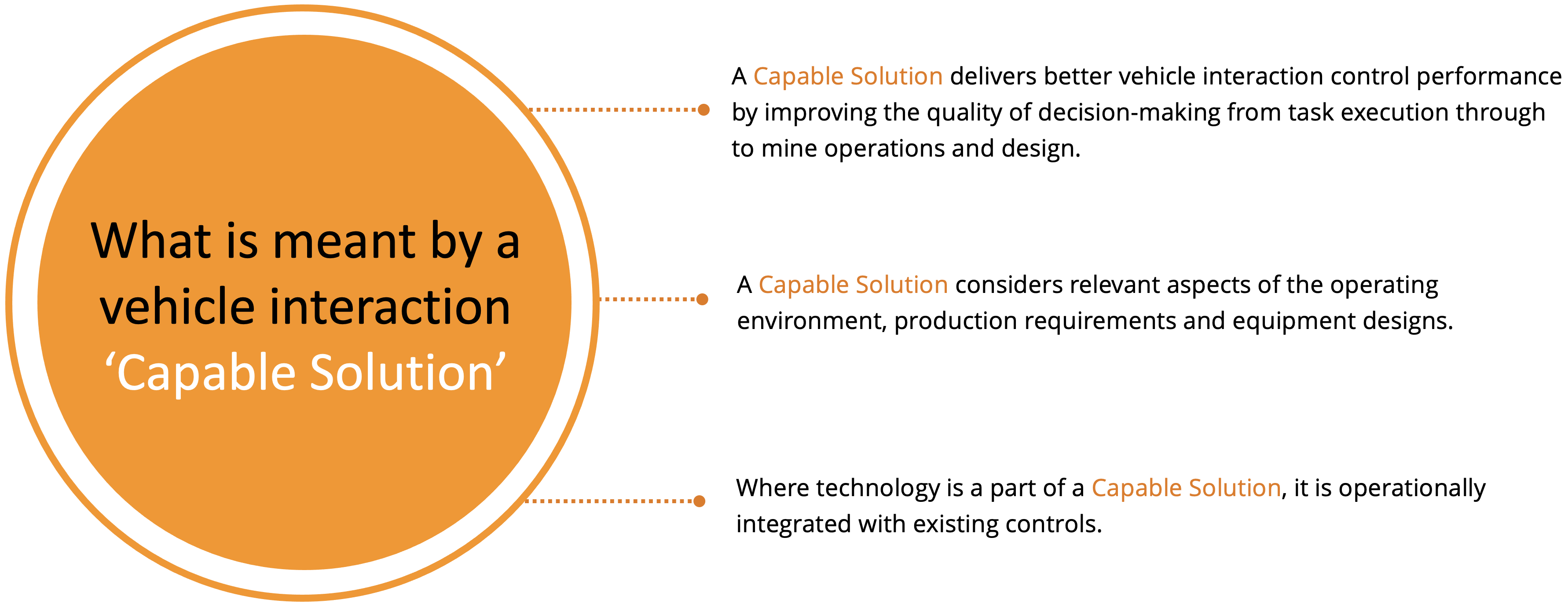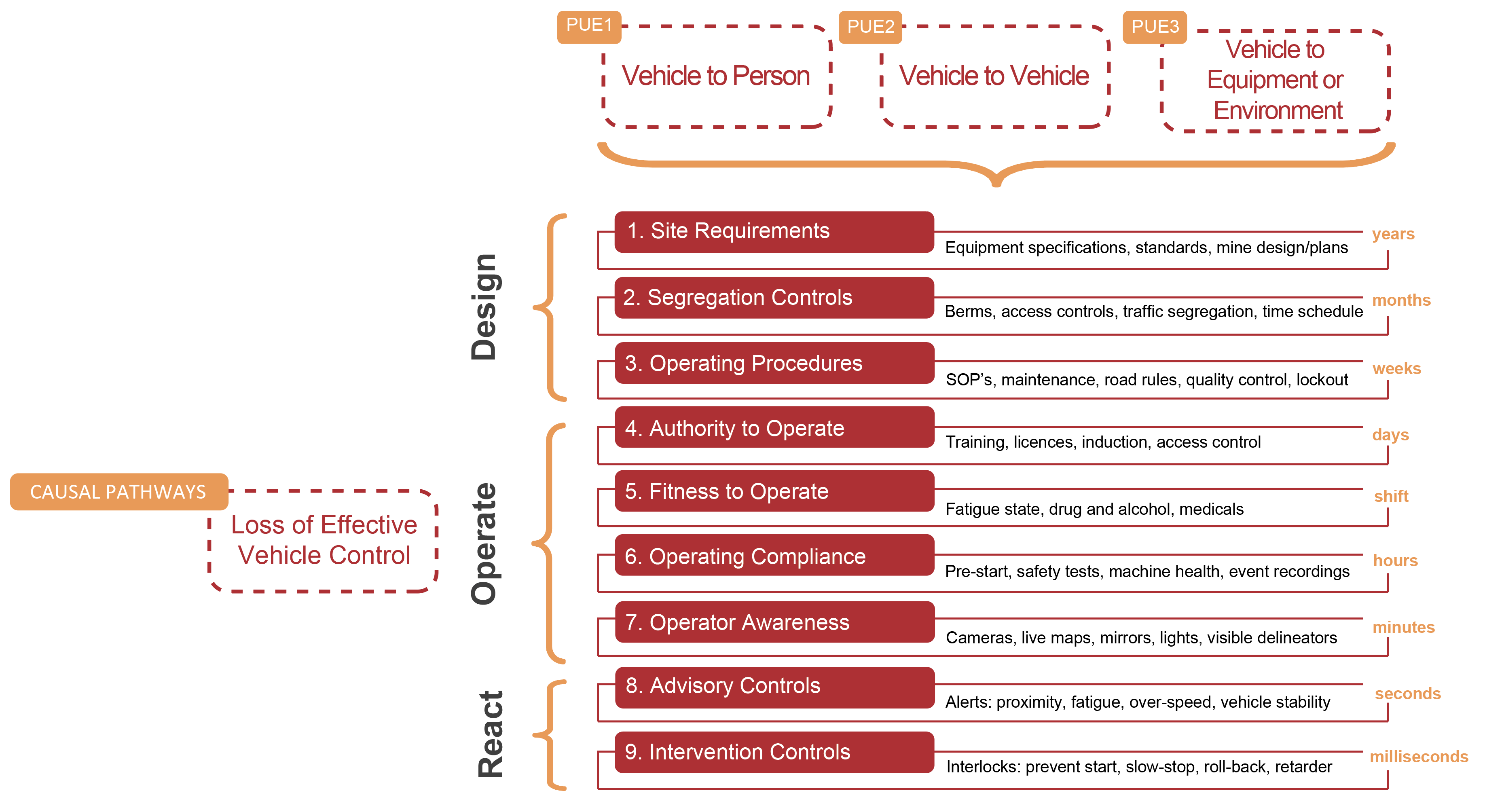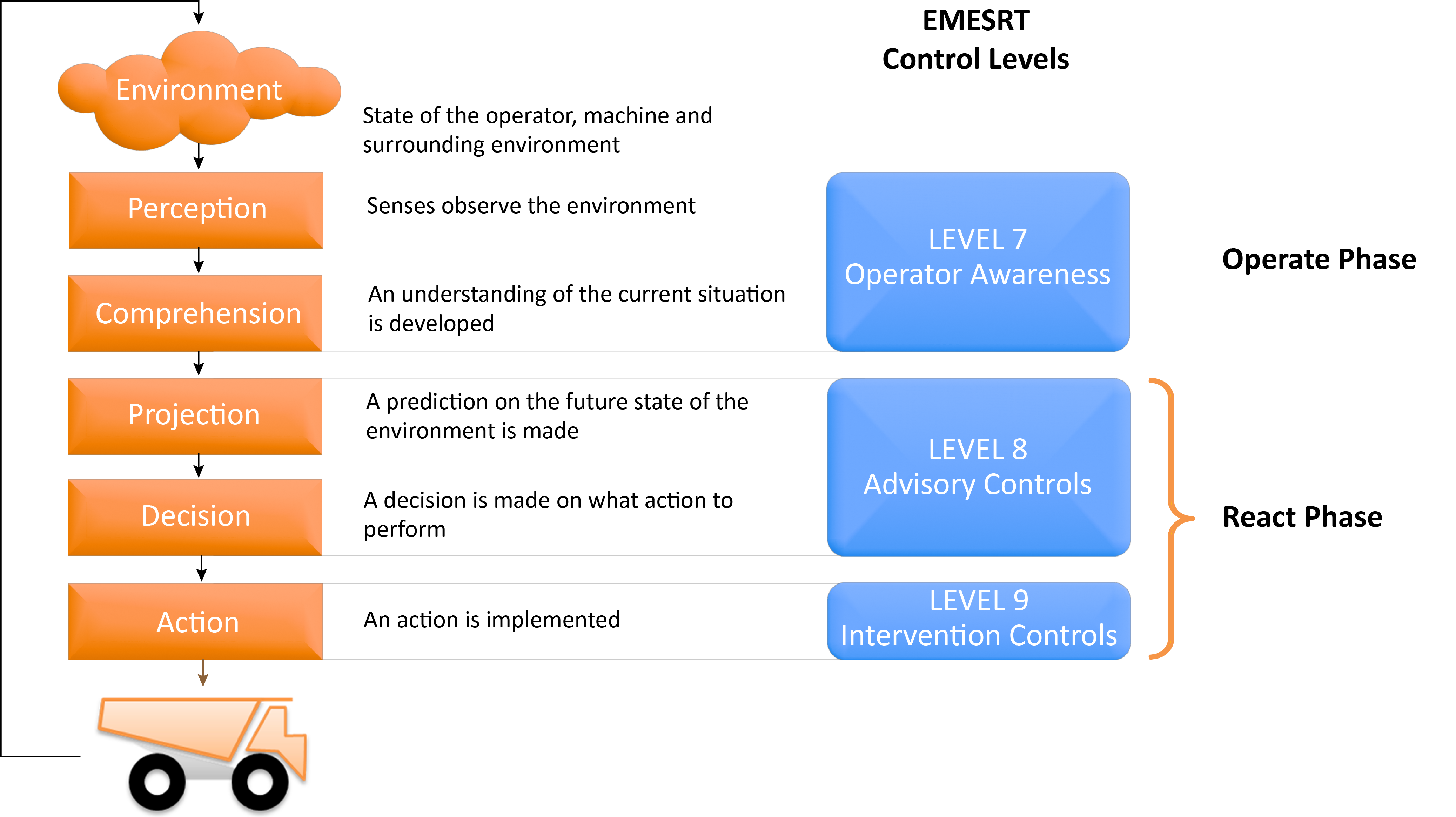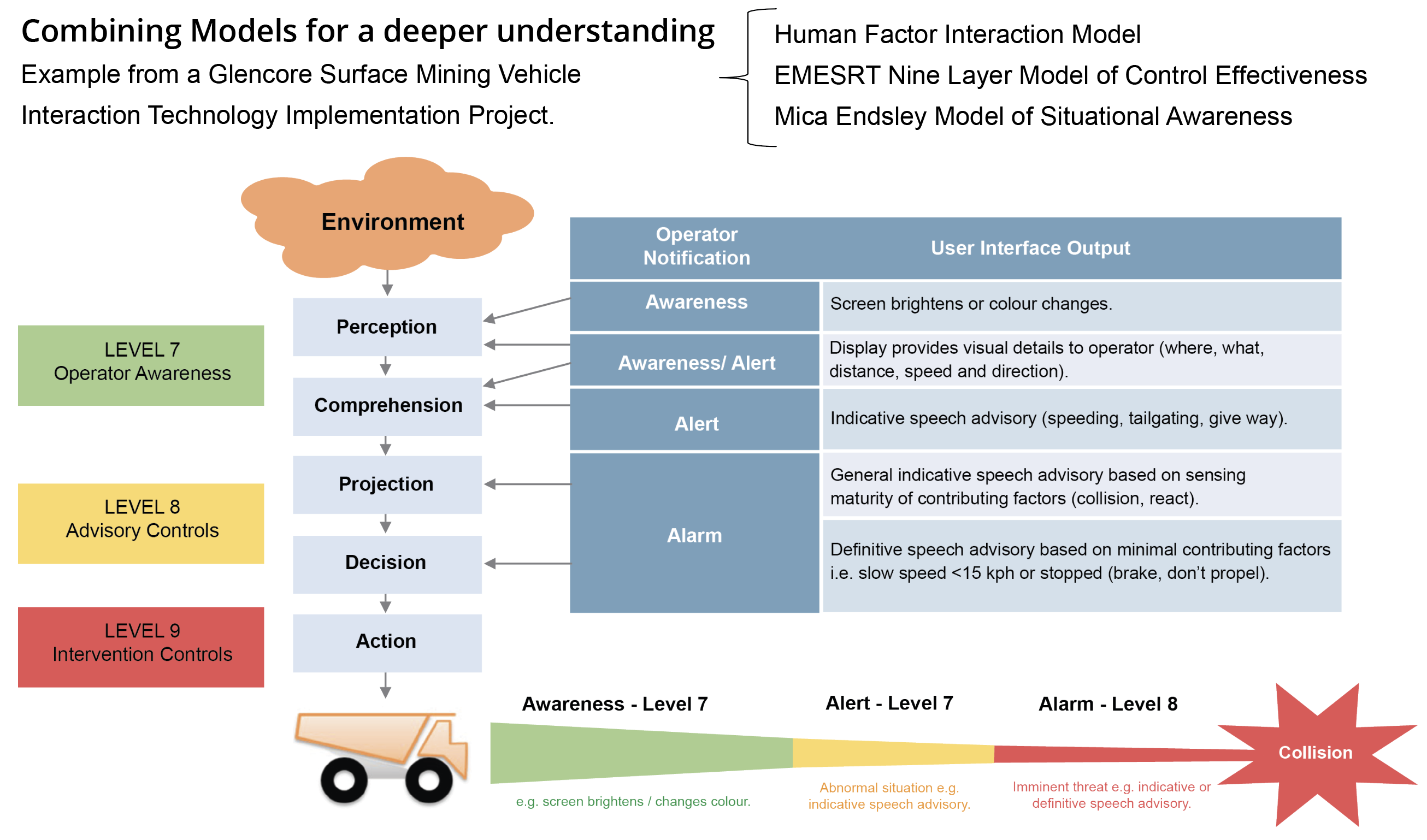Vehicle interaction control improvement
Project objective
To improve the effectiveness and reliability of vehicle interaction controls in mining.
Introduction
Improving vehicle interaction controls in the mining industry is a complex challenge at the company and operating site level. There is an ongoing effort to improve operating approaches, including implementing technology solutions, particularly in reactive circumstances.
Each year, between 30-40% of industry fatalities are attributable to failures of vehicle interaction controls, and of these, about half involve pedestrians, mostly in underground operations.
The industry, including regulators, continues to see a high number of unwanted vehicle interaction incidents with a high potential for fatalities and serious injuries. This, combined with the complexity and uncertainty of outcomes from existing technology, the rapid development of options, and interoperability concerns, meant an industry-user-driven response was needed.
....between 30-40% of industry fatalities are attributed to failures of vehicle interaction controls....
Image: Mine Safety and Health Administration Fatalgram 2017.
This industry project
EMESRT has been working on the Vehicle Interaction (VI) topic since 2013. The EMESRT methodology is to focus deeply on defining the problem, getting a common understanding with a large group of stakeholders, then go to the designers and provide a common view of the problem with the intent that designers see it as a business opportunity in providing solutions to all or part of the problem.
EMESRT first turned its attention to vehicle interaction in 2007 when it published Design Philosophy 5 (DP-5), focusing on machine operation controls.
DP-5 objective is to prevent harm, during machine operation and control, to as low as reasonably practical, including consideration in design for foreseeable human error.
This EMESRT industry project builds on the indicative design problem information in DP-5 and is a more definitive extension of the original work carried out in developing the design philosophy.
The Technical Working Group (TWG) members are actively involved in the project and provide their time, expertise, knowledge and experience to EMESRT on a volunteer basis. They contribute to monthly meetings, webinars, workshops, one-on-one discussions, and the development of industry resources. The EMESRT advisory group members appreciate and acknowledge their contribution.
The project leads provide strategic direction to the vehicle interaction control improvement TWG, which consists of a broad range of industry stakeholders.
The compelling case
The effectiveness of these interactions plays a pivotal role in determining safety, asset integrity, efficiency, and productivity levels. Each element influences the other, creating a complex, interconnected environment.
EMESRT has identified industry-level opportunities:
- Share experience and know-how to develop a common and structured understanding of the issues and opportunities
- Use common problem definitions and functional performance scenarios to assist Original Equipment Manufacturers (OEM’s) and third-party Proximity Detection System (PDS) designers in developing industry-level solutions
- Confirm react and other technology innovation opportunities that will improve or replace what we do now
- Identify and share design and operate innovation opportunities
- Develop aligned processes that assist with the operational integration of react and other technology innovation opportunities
Mining industry fatality experience tells us that no organisation has reliably sustained vehicle interaction management. Since its formation, EMESRT has led and participated in industry-level initiatives with the common goal of improving the effectiveness and reliability of vehicle interaction controls in mining.
In 2016, EMESRT realised that vehicle interaction is a highly dynamic and complex topic due to the high level of human factor control aspects and that the potential solutions are quite diverse because of the different environments. EMESRT needed to expand its reach and the volume of aligned users to better influence designers. Understanding and implementing collision avoidance system technology projects is complex.
In 2017, EMESRT approached the International Council for Mining and Metals (ICMM) and in 2018, EMESRT and ICMM formed an industry partnership.
This partnership is part of the ICMM Innovation for Cleaner, Safer Vehicles (ICSV) broader initiative that aims to enhance safety practices in the mining industry by leveraging the expertise of members from both organisations. With a focus on promoting leading practices through capable solutions, the ICSV initiative aims to:
- Introduce greenhouse gas-emission-free surface mining vehicles by 2040
- Minimise the operational impact of diesel exhaust by 2025
- Make collision avoidance technology available to mining companies by 2025
The initiative has CEO-level support that brings together company members, original equipment manufacturers, and technology suppliers in a non-competitive space to mobilise the investment needed to accelerate the development of a new generation of mining vehicles.
ICMM leading sites initiative
This Leading Sites initiative aims to improve the mining industry’s vehicle interaction performance. Notably, it seeks to improve safety through collaboration and the sharing of leading practices. It’s a pivotal tool for driving continuous vehicle interaction control improvement in the mining industry
One significant aspect of the ICMM Leading Sites initiative is its partnership with EMESRT.
The initiative provides a platform for transparent and meaningful two-way dialogue between mining companies, OEM’s and technology providers. This dialogue helps identify and address equipment related hazards.
A key platform of the Leading Sites initiative is the Capable Solution definition, which sets out three key principles of a VI improvement program.
In late 2021 and throughout 2022, a broadreaching strategy was established through a series of consultative engagements.
In October 2022, ICMM/EMESRT brought mining users, OEM’s, third-party technology providers, researchers, and other industry experts together. This initial four-day workshop had 77+ participants who reviewed and tested the validity of the package of vehicle interaction improvement resource materials developed, which start with a way to look at underlying control effectiveness as part of the ecosystem that technology integrates into.
This is where all the knowledge resources related to the Vehicle Interaction Control Improvement program developed by EMESRT were introduced to users through a practical workshop. The challenge for the stakeholder group was to determine the relevance of the materials to address the problems and provide feedback on enhancements to those materials. The resounding output from participants was that the material is a very useful piece of work, or piece of information, that will allow the industry to move forward on its improvement goals. The basis for the Leading Sites program was established following the endorsement of the resource materials.

Figure: ICMM ICSV VI leading sites program capable solution.
In 2023, the first two Leading Sites workshops were held in Brisbane, with ICMM and EMESRT member company representatives involved. Following the first workshop, a monthly online forum was established where workshop participants shared their experiences and provided feedback on progress, both positive and negative learnings.
Using the EMESRT Control Effectiveness approach, the TWG confirmed the required operating states that need to be in place to provide consistent, safe, and productive mining operations that also prevent and mitigate vehicle interaction hazards.
This Control Effectiveness approach presents industry-validated failure modes and the business inputs that should be in place to prevent a required operating state from being compromised. It provides both a ‘whole-of-system’ overview and detailed information about the dynamic interconnects between personnel, equipment, the work environment, workgroups carrying out different tasks, and overall coordination.
The Control Effectiveness approach promotes the systematic identification of improvement opportunities. To learn more about this approach click here.
Vehicle interaction diagrams
Functional performance requirement objectives.
The objective is to prevent a person or vehicle causing a potential unwanted event in the following three categories resulting in injury or equipment damage:
- Vehicle to person
- Vehicle to vehicle
- Vehicle to equipment or environment
These are depicted in context in the EMESRT 9-Layer model below.

Adapted from the model of situational awareness - Mica Endsley 1998.


Key baseline and validation concepts: time phased prior to a collision.
Vehicle interaction improvement project relevance
- Ongoing real world dynamic interdependence between control levels
- High dependence on human factor decision making in real time
- To implement Level 8 and 9 controls well, you first need to understand the effectiveness of your Level 1 – 7 baseline for normal operations


